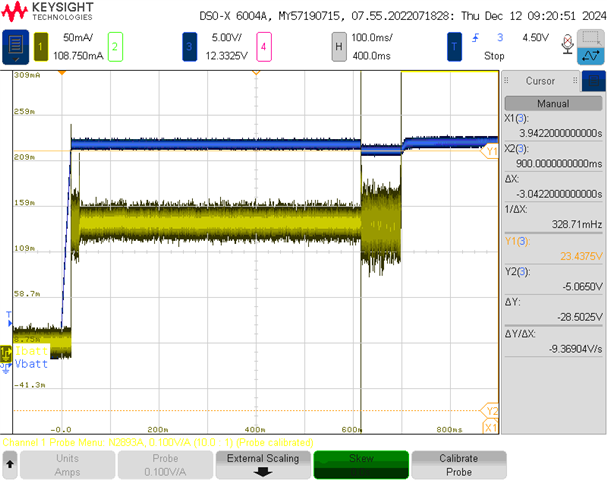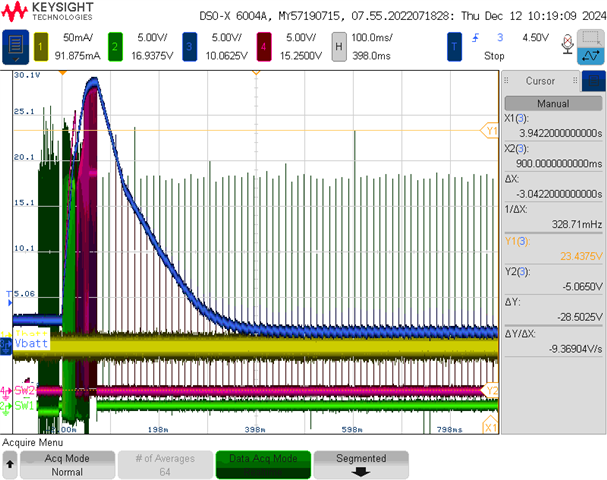Other Parts Discussed in Thread: BQ78350-R1, BQSTUDIO, , BQ25756
Tool/software:
I'm going to have several questions here related to my design (each question in bold).
I've designed a battery charger using the BQ25756E, and it is charging an 8-cell, "24V" LiFePO4 battery pack at 2.96A ICHG and 29.14V VCHG nominally. Its VAC is provided by a 24V benchtop power supply for testing (will eventually be an AC/DC supply in the product).
This battery pack has a BMS (BQ78350-R1) in it that disables the battery's output once the battery gets discharged below a certain level: 20V in my case.
My problem is that the BQ25756E is unable to (reliably) "wake up" this battery to begin charging it. However, simply applying an external power supply voltage works just fine (and the battery "wakes up" immediately upon voltage application). Also once the battery is "awake", the BQ25756E works just fine as far as I can tell.
In order to "wake up" the battery, it seems I need to apply a certain voltage (something above the battery's internal voltage, I assume). I also assume perhaps there needs to be a certain minimum charging current associated with this.
- Can you help point me to the right place in the BQ78350-R1 datasheet that talks about how to "wake up" a battery that's been overdischarged to its CUV limit? I am struggling to find this in its datasheet.
Some o-scope screenshots:
Sometimes the BQ25756E wakes up the battery just fine (Blue = output voltage of BQ25756E, yellow = output current into battery; the battery is "awakened" once the charger starts charging at the ~3A rate):
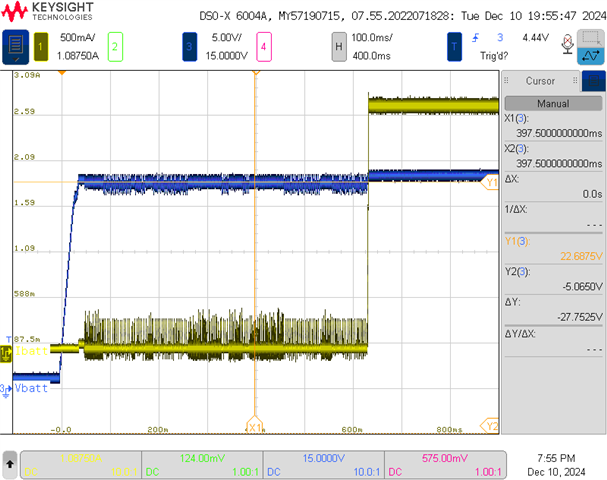
Sometimes it works, but with what looks like a retry:
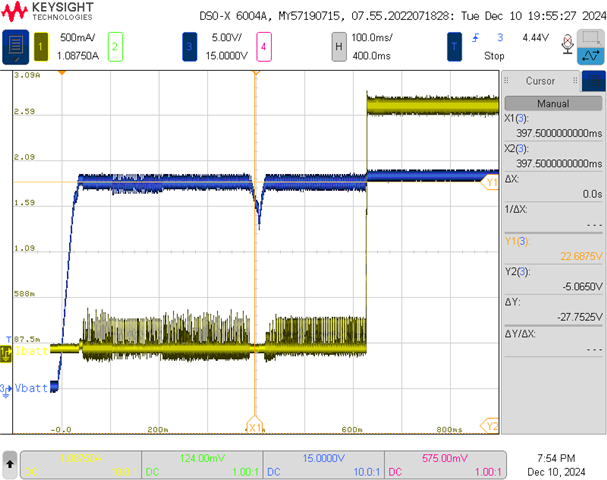
Sometimes it doesn't work at all:
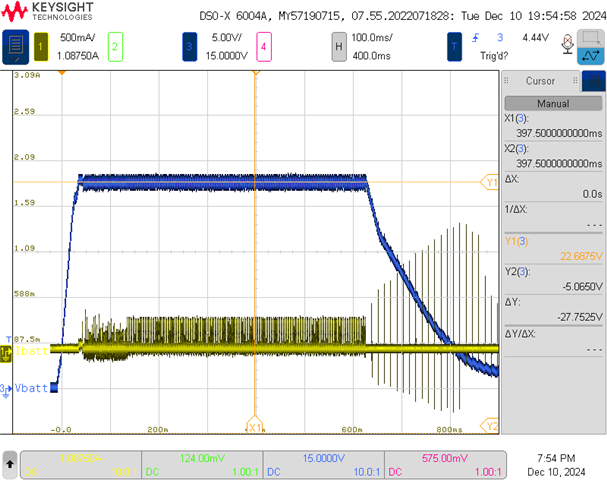
With no battery attached, the o-scope shot looks like the 3rd plot above (except the output voltage gets up to the VCHG value of ~29V). My understanding was that the BQ25756E was supposed to retry once the output bled down to the VRECHG value (97.5% of VCHG by default). This clearly is not happening.
- The current "fuzz" between ~200ms and 600ms are quick pulses of ~300mA at varying / inconsistent times. Any idea what that is?
- The larger spikes after ~600ms occur at a consistent ~13ms period. Any idea what this is?
- What is the trickle charge current value? I can't find it anywhere...
FYI - I have not yet hooked up to bqstudio so far, but plan to if i can't get any farther.
Thanks for the help!
-Bill


